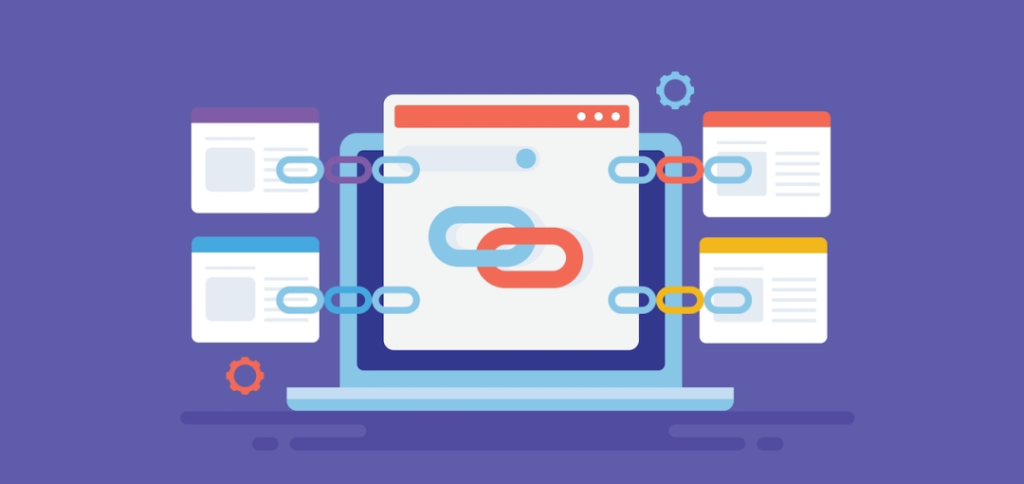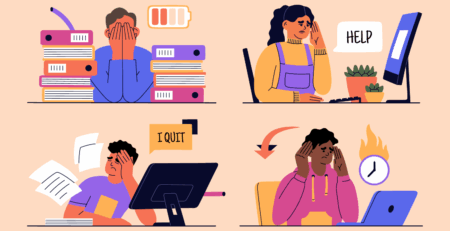The desktop is still important in the online world to level up your SEO game. Ignoring this massive force is like missing half of your traffic on your website. As we know that nowadays mobile SEO shines bright, you can’t miss this opportunity to boost your brand’s credibility and easy access. Is desktop SEO still alive? If so, how much time should marketers spend optimizing it? Let’s dive into the world of desktop SEO and find out how important it is for your business to attract potential prospects.
Table of Contents
What Is Desktop SEO?
Desktop SEO refers to the techniques used to optimize websites for search engines on PCs and laptops. Unlike mobile SEO, marketers must consider specific considerations when employing SEO tactics. Page speed, file size, and content are some of the elements that might affect website rankings.
Both desktop and mobile SEO are crucial, but the technique to optimize your website differs for desktop. This sort of SEO necessitates a greater emphasis on the technical SEO of the website in order to rank highly in search engines. All of these factors contribute significantly to your website’s visitor growth.
How Is Desktop SEO Different From Mobile SEO?
Both desktop and mobile SEO require the same practices. However, mobile SEO is slightly more complex and variable than desktop due to various factors e.g., location, screen size and others. Below, we’ve highlighted key differences between desktop and mobile SEO and how they impact search results.
Search Engine Results
Google shows results based on user expectations, and it changes depending on what device you use for searching. When you know the key differences between these two devices, you’ll have the best foundation to create SEO strategies. So, let’s scroll down to learn how both SEOs work for your website.
For mobile, the screen size is smaller; hence, Google can’t manage to show two columns at once. Mobile SEO dynamics have seen a significant change in the past few years, and it has put more emphasis on visuals.
When you search on mobile, you’ll find more visuals with listings, and it can only accommodate two to three listings on one page. Mobile users have to scroll down to many pages because each swipe is short. Hence, mobile users usually choose the first option in search results rather than going down to the alley.
On the other hand, desktop screens can accommodate more search results on a screen at one time. You can see more results which requires less scrolling through the results. You can reach the end of the page in a few scrolls.
Click-Through Rate (CTR)
The desktop and mobile SEO have a big impact on click-through rate. Click-through rate (CTR) is a rate/percentage of people who see your and click on it. For higher CTR, businesses must capture the attention of the users by showing compelling visuals.
As we know that mobile screen size is small and one has to scroll down to see the results. It results in more CTR than on desktop. Mobile SEO is usually more visuals which means users will click through more.
The desktops have wider screens and can show more results at one time which impact CTR. When you have most of the results appear on one page at once, CTR will likely drop. Users usually click on the initial results which significantly reduce results listings.
Search Layout
Google has more space on your desktop. They can display a long list of search results, each with a description and, in some cases, additional information. This means you can see more options at a glance on your computer, but you may need to scroll down a little on your phone to view them all.
Another difference is how Google offers additional features such as ‘knowledge panels’. These panels normally show on the right side of your computer’s screen. However, on your phone, they take center stage at the top of the page, pushing the search results lower down. This means more scrolling around your phone to find what you’re looking for.
Location
People use mobile more to search locations and businesses, events as compared to desktops. It means these searches drive more organic traffic to your businesses as people can find instant results searching for locations through mobiles. Optimizing your website for location is far more important than for desktop. Using smartphones, people can walk through a restaurant, by typing “best Thai restaurants near me”. These types of queries are usually made through mobiles.
While the desktop caters to different needs of the website. It optimizes focus on detailed information and broader search queries.
Operating Systems
Operating systems play a crucial role in SEO. Search engines usually treat desktop queries similarly to mobile OS. However, the game flips when two major OS players clash, iOS and Android for mobile. These two OSes treat queries in their way which directly impact SEO. For example, there may be a slight difference in how Android handles technical aspects of the website than iOS. This requires a slight improvement or adjustments in coding.
Whereas the desktop works on MacOS and Windows, which works fairly the same. By prioritizing the response design, you can create a positive user experience across all devices.
Page Speed
Page speed is crucial for website ranking for both desktop and mobile users. Since Google has verified it as a ranking component, specifically for mobile users, it impacts user experience. Slow loading speeds frustrates users either on mobile or desktop and compel them to leave your website. When a user leaves your website quickly, this is called bounce rate which has a serious impact on your SEO. Yes, search engines want to see more user engagement.
The difference between desktop and mobile SEO in terms of page speed boils down to patience. Mobile consumers are less tolerant of waiting, thus the extra seconds it takes a website to load on a phone might result in a considerable increase in bounce rates. To overcome this, SEO strategies focus on optimizing page speed using techniques such as image compression and code simplification.
Best Practices to Boost Your Desktop SEO in 2024
While mobile SEO takes a center stage, desktop SEO still holds a significant power in the online world. The key is to know the difference between mobile and desktop SEO. It helps build informed SEO strategies for both desktop and mobile. Below we have compiled best practices for SEO on desktop in 2024.
Content Optimization
Desktop users engage with in-depth content. Therefore, content optimization ensures that your desktop contains valuable material that search engines can index and rank it well.
Go Comprehensive
Desktop users have greater time and attention spans. Create in-depth material with increased intricacy and complexity. Informative blog entries, white papers, and detailed product descriptions are invaluable for desktop SEO.

Structure and Readability
Make sure your writing is clear and succinct, and that you use proper formatting. Use headings, subheadings, and bullet points to break up the content and improve readability.
Target Desktop Keywords
Approach search queries with a desktop-centric perspective. Desktop consumers may be further along in their purchasing experience, employing more specialized and long-tail terms than mobile searchers.
Focus on Technical SEO
When you focus on technical SEO, you ensure that your website is discoverable in search results. If you ignore this aspect, Google may not even crawl your website.
Improve Loading Speed
Prioritize websites that load quickly on desktop computers. This involves optimizing pictures, reducing code, and using browser caching. Slow loading times annoy users and lower your SEO rating.
Clean Code Structure
Make sure your website’s code is properly structured and evaluated. This enhances search engine crawling and indexing, allowing for higher visibility in search results.
Mobile Responsiveness
While it may appear paradoxical, a flexible website design is critical for desktop SEO. This guarantees that your website adapts to different screen sizes and resolutions, providing a consistent user experience even on computers of varying sizes.
Enhance User Experience
Search engines favor user engagement for both mobile and desktop. Below are some strategies to enhance user experience on desktop.
Clear Navigation
Desktop screens provide more space for complex navigation frameworks. Use drop-down menus, sidebars, and structured internal links to help users locate what they’re looking for.
Complex Layouts
Use the wider canvas to create compelling layouts with visual elements like infographics, charts, and high-resolution photographs. This keeps desktop users visually engaged and intrigued.
Focus on Conversions
Because of the greater screen real estate and ease of use of complex forms, desktop users are more likely to convert (make a purchase or do a desired action). Optimize your website for conversions by including clear calls to action and a simple checkout procedure.
Leverage Internal Linking

Here’s how linking to various pages on your website might boost your desktop SEO. Internal links function similarly to spreading stars throughout your webpages. By linking valuable material to other related pages, you may spread its ranking power and help lesser-known pages appear higher in search results.
What’s the ultimate goal? A well-linked website that is both search engine and user-friendly, particularly for desktop visitors who enjoy digging deeper into your material.
Big Screens, Big Opportunities
While mobile grabs the attention and offers more convenience, desktop SEO should not be overlooked. Desktop offers more opportunities to the businesses by adding more value. In-depth content and easy navigation on desktop requires the same level of SEO practices as mobile. Remember that a well-rounded SEO strategy can cater to all devices, your website will thrive more on desktops and beyond.
Are you ready to maximize the possibilities of your desktop SEO? Our skilled team can assist you in developing a successful approach for your website that is optimized for both desktop users and search engines. Contact us today to schedule a free consultation and see how we can help you dominate desktop searches!
FAQS
Does having your website desktop friendly increase ranking?
Not necessarily, it’s all about the website’s preferences. There are certain factors that influence Google ranking, including mobile-friendliness and overall user experience. Moreover, Google values high-quality content, loading speed etc. However, it is always a wise decision to optimize your website to increase ranking.
Which is more important, mobile or desktop?
Both are important! Mobile SEO is critical for most consumers, but desktop SEO should not be overlooked. A well-rounded strategy appeals to all devices, ensuring maximum reach.
How Long Does It Take for SEO to Work?
SEO results do not provide quick gratification. While some programs can show results in 4-6 months, it may take longer based on your sector, competition, and website history. The idea is to set realistic expectations. Avoid agencies that promise overnight success; true SEO requires time and work.
What Is Crawling and Indexing?
Crawling is like the librarian scanning the shelves, looking at all the website pages. Indexing is like the librarian adding relevant books to the catalog. Search engines don’t add everything they find – they pick the most relevant websites to show in search results.



















